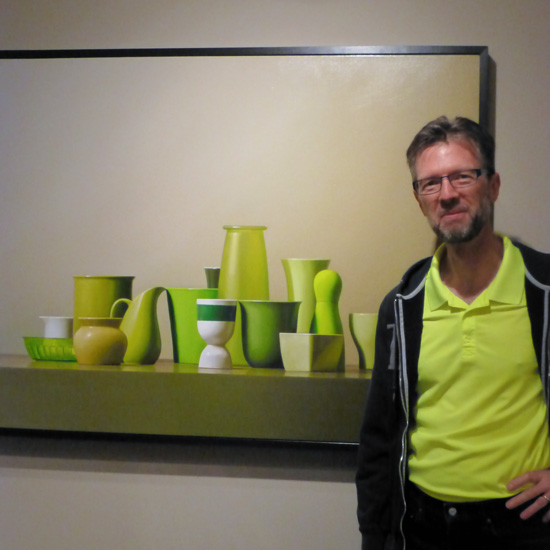Artist's Statement
I can fold a fitted bed sheet so it looks like you just pulled it out of the package. When I spread butter, I cover every square centimeter evenly. I cut my fruits and vegetables into perfect geometric units. I've found that when I approach my everyday tasks with the same desire for order as when making art, these chores contribute to my sense of well-being rather than drag me down.
I'm attracted to sushi because it is made and arranged with this same sense of purpose. In addition, food is a very powerful trigger for memories. For me, sushi is a food of celebration. Every time I eat it, I'm reminded of first dates, anniversaries, and the sharing of life's successes with loved ones.
I've studied and appreciate ancient Egyptian art, but never suspected it might influence my paintings. I made dozens of still-life paintings of objects arranged on a tabletop from a single point of view, but was looking for a different way of representing space while still maintaining a realistic style. In Egyptian wall paintings and reliefs, there is no linear perspective or foreshortening of body parts. Each object is shown from its "best" perspective. For example, you can see the whole top of a table as a rectangle, but the objects on it are presented in profile. Feet are viewed from the side, torsos frontally and heads in profile. From this, I realized I could compartmentalize the different elements and show them from their best individual point of view.
I am also influenced by catalog advertisements that distort scale. A tiny person is positioned next to an array of shirts that could fit an elephant by comparison. I began to adjust the scale of the objects to give more impact to the abstract arrangement of the shapes. Much of my creative work involves what I would call "visual poetry." I arrange and rearrange my vocabulary of objects and photographs hoping to find two or three that when combined make that magic spark called art.
– Peter J. O'Halloran

